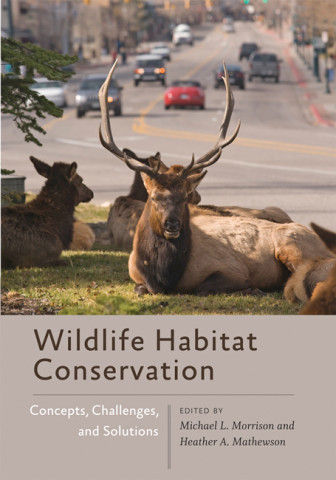
Reviews
This new book offers a wealth of valuable [and] accessible information about how North American wildlife has been and is presently managed. Indeed, all those who hold an interest in North American lands and the wide range of wildlife species living thereupon would be very much benefited from discovering for themselves just how those who hold responsibility for these species think about them, what their goals for them are, and how they go about their respective work.
A celebration of the success of the North American Model of Wildlife Conservation, this book will fill an urgent need for comprehensive analysis of the NAM. The authors cogently make the case for the importance of the Model's underpinning of much of the success of modern wildlife conservation and management.
Book Details
Acknowledgments
About the Contributors
1 The North American Model of Wildlife Conservation: Setting the Stage for Evaluation
Shane P. Mahoney, Valerius Geist, and Paul R. Krausman
2 North American
Acknowledgments
About the Contributors
1 The North American Model of Wildlife Conservation: Setting the Stage for Evaluation
Shane P. Mahoney, Valerius Geist, and Paul R. Krausman
2 North American Ecological History as the Foundation of the Model
Valerius Geist and Shane P. Mahoney
3 The Social Context for the Emergence of the North American Model
John Sandlos
4 The Great Early Champions
James Peek
5 Critical Legislative and Institutional Underpinnings of the North American Model
James L. Cummins
6 The Landscape Conservation Movement
William Porter and Kathryn Frens
7 Hunting and Vested Interests as the Spine of the North American Model
James R. Heffelfinger and Shane P. Mahoney
8 Science and the North American Model: Edifice of Knowledge, Exemplar for Conservation
James A. Schaefer
9 North American Waterfowl Management:
An Example of a Highly Effective International Treaty Arrangement for Wildlife Conservation
Shane P. Mahoney
10 Private-Public Collaboration and Institutional Successes in North American Conservation
John F. Organ
11 Social, Economic, and Ecological Challenges to the North American Model of Wildlife Conservation
Leonard A. Brennan, David G. Hewitt, and Shane P. Mahoney
12 A Comparison of the North American Model to Other Conservation Approaches
Rosie Cooney
13 The Model in Transition: From Proactive Leadership to Reactive Conservation
Shane P. Mahoney
Index







